Easy Weaving with Little Looms is a perennial favorite. By popular demand, it will now be available by subscription. Each issue will have the mix of 18–22 projects, techniques, and features you love, expanding the focus on fundamental weaving skills, creative inspiration, and innovative applications. Each issue is designed to have something for beginning and more experienced weavers. In addition to the core subjects of rigid-heddle and pin-loom weaving, Little Looms regularly includes projects and articles about tapestry, tablet weaving, and inkle weaving.
Little Looms
EDITORIAL
FANCY FINDINGS • Wash without fear, test design theories with abandon, weave shapes completely outside the box, and enjoy the function and form of a beautiful handheld beater.
AMAZING CIRCULAR WEAVING LITTLE LOOM TECHNIQUES, PATTERNS, AND PROJECTS FOR COMPLETE BEGINNERS
SWIRLY TWILL COASTERS
TABLET WEAVING HIDDEN DESIGNS
LET'S MAKE thick yarn
ON PINS AND NEEDLES • Whether you're fixing an error, doing decorative embroidery, hemstitching, or simply keeping a folded hem in place until you can sew it later, you'll want the right pin or needle for the job—and you'll want it close at hand. Here are a few items to make working with these tiny but necessary tools easier and more enjoyable.
A GATHERING OF THREADS • The Japanese tradition of kumihimo (literally translated as “gathering of threads”) has been evolving for more than a thousand years. Kumihimo was brought to Japan in the Nora period. (710-794 CE) along with Buddhism. (According to Rodrick Owen's book Making Kumihimo, it was believed that God's presence could be found in the braid.) Buddhist monks wove decorative braids that were; Used to secure clothing and in religious ceremonies. Over time, the braids became male complex and their uses more varied: braids were used to decorate temples and in the Japanese tea cerenttony.
STRING THEORY: THE NEW ICE AGE OF COLOR • Like other weavers, I dabbled with fiber dyeing using natural and synthetic dyes and various fibers, yarns, and completed objects over the years. I tried dip-dyeing, spray dyeing, traditional tie-dye, resist technigues such as batik and shibon, and simply tying in a way that would look nice. But none of these methods have captured my imagination nearly as much as ice dyeing, a techmgue I learned just a few years ago.
BEYOND PLAIN WEAVE
HOUNDSTOOTH FANTASY SCARF
PLUSH AND PRETTY TOWELS
ESSENTIALS ONLY MAKEUP BAG
TISSUES TO GO
MINI-OTTOMAN PINCUSHION
AUTUMN SUNSET PONCHO
ROYAL LUPINE LAP BLANKET
HOUNDSTOOTH FANTASY SCARF
PLUSH AND PRETTY TOWELS
ESSENTIALS ONLY MAKEUP BAG
TISSUES TO GO
MINI-OTTOMAN PINCUSHION
AUTUMN SUNSET PONCHO
ROYAL LUPINE LAP BLANKET
THICK-AND-THIN HAND TOWELS
PICTURE-PERFECT PURSE
FOREST TOQUES
FALLING LEAVES TABLE SET
INLAY WHIMSY SCARF
FROSTY ICE-DYED SCARVES
THICK-AND-THIN HAND TOWELS
PICTURE-PERFECT PURSE
FOREST TOQUES
FALLING LEAVES TABLE SET
INLAY WHIMSY SCARF
FROSTY ICE-DYED SCARVES
PHOENIX RISING SHAWL
MIX-AND-MATCH KITCHEN SET
SET OF SETTS SCARF
STAR SHAWL
AUTUMN LEAVES RUNNER
PHOENIX RISING SHAWL
MIX-AND-MATCH KITCHEN SET
SET OF SETTS SCARF
STAR SHAWL
AUTUMN LEAVES RUNNER
STITCHING BUILDING BLOCKS • “Let's start at the very beginning, a very good place to start.” Start with a single straight stitch, and the world is your oyster when it comes to working many other stitches, whether you are using them to join two pieces of cloth or to add decorative touches to a piece.
FINISHES & SEAMS
SUPPLIERS
hello...
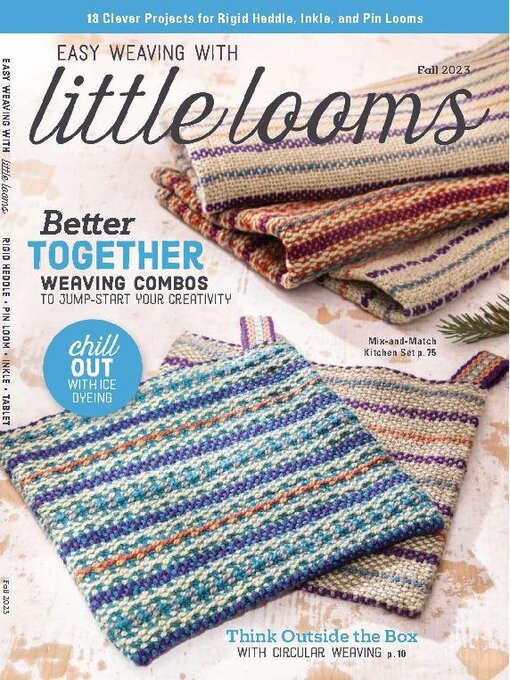
 Spring 2025
Spring 2025
 Winter 2024
Winter 2024
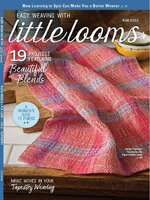 Fall 2024
Fall 2024
 Summer 2024
Summer 2024
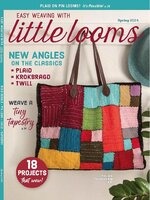 Spring 2024
Spring 2024
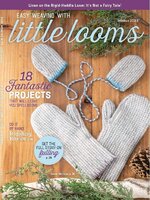 Winter 2023
Winter 2023
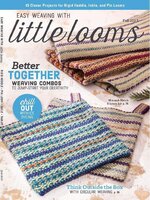 Fall 2023
Fall 2023
 Summer 2023
Summer 2023
 Spring 2023
Spring 2023
 Winter 2022
Winter 2022
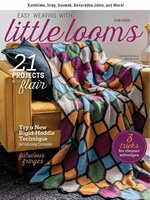 Fall 2022
Fall 2022
 Summer 2022
Summer 2022
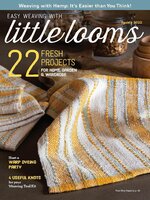 Spring 2022
Spring 2022
 Holiday 2021
Holiday 2021
 Summer 2021
Summer 2021
